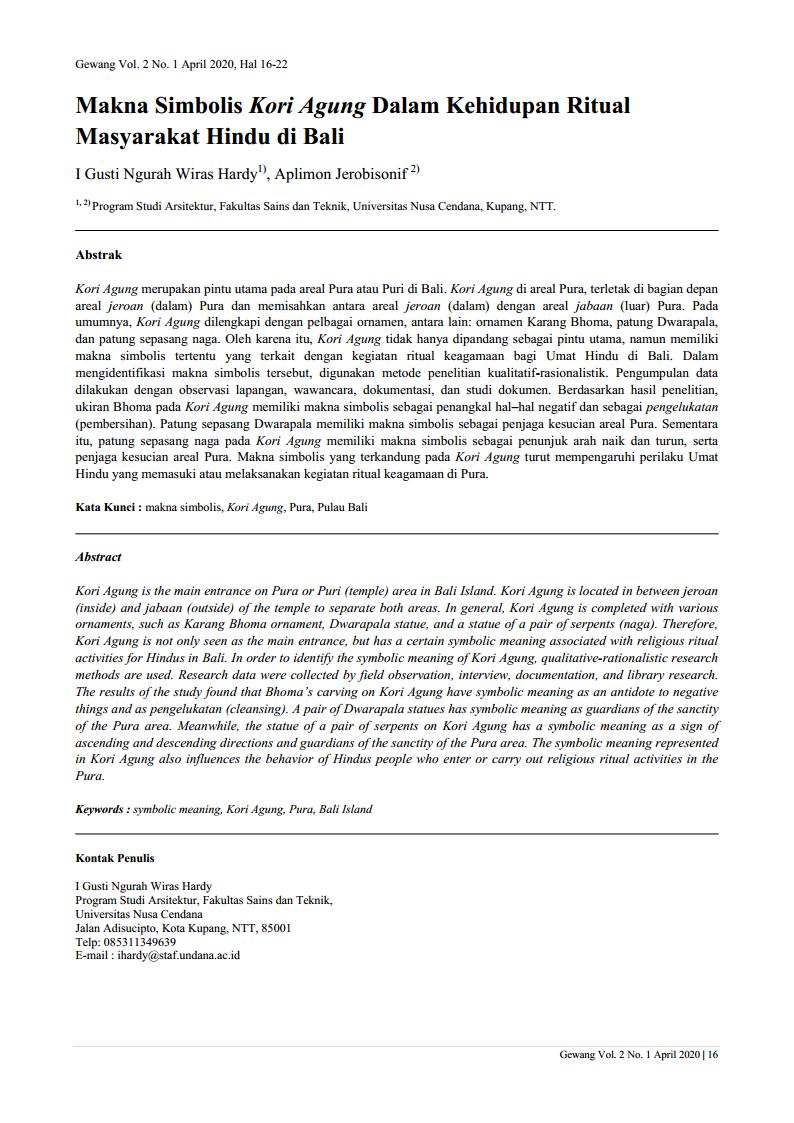Makna Simbolis Kori Agung Dalam Kehidupan Ritual Masyarakat Hindu di Bali
Main Article Content
Abstract
Kori Agung is the main entrance on Pura or Puri (temple) area in Bali Island. Kori Agung is located in between jeroan (inside) and jabaan (outside) of the temple to separate both areas. In general, Kori Agung is completed with various ornaments, such as Karang Bhoma ornament, Dwarapala statue, and a statue of a pair of serpents (naga). Therefore, Kori Agung is not only seen as the main entrance, but has a certain symbolic meaning associated with religious ritual activities for Hindus in Bali. In order to identify the symbolic meaning of Kori Agung, qualitative-rationalistic research methods are used. Research data were collected by field observation, interview, documentation, and library research. The results of the study found that Bhoma’s carving on Kori Agung have symbolic meaning as an antidote to negative things and as pengelukatan (cleansing). A pair of Dwarapala statues has symbolic meaning as guardians of the sanctity of the Pura area. Meanwhile, the statue of a pair of serpents on Kori Agung has a symbolic meaning as a sign of ascending and descending directions and guardians of the sanctity of the Pura area. The symbolic meaning represented in Kori Agung also influences the behavior of Hindus people who enter or carry out religious ritual activities in the Pura.
Downloads
Article Details
This license enables reusers to distribute, remix, adapt, and build upon the material in any medium or format, so long as attribution is given to the creator. The license allows for commercial use

